This past month I was fortunate to be a guest of Xidian University in China for two weeks. On this episode of the podcast I share stories and reflections from my adventures as a first-time visitor to China, and I give an overview of some of the public talks and lectures I gave.
The episode has four distinct parts. The first 20 minutes is stories from my trip and observations about Chinese culture. Then there are three discussions on philosophy, science and critical thinking topics:
(1) on circular reasoning in the appeal to science and nature to justify social and political views;
(2) on the elements of science literacy and why public science education doesn’t teach it; and
(3) on the history of critical thinking in the west, and the challenges of talking about the value of critical thinking to audiences in modern China.
You can find a photo essay with lots of pics below!
In This Episode:
- (00 min -20 min) stories from my trip and observations about Chinese culture
- (20 min – 30 min) on circular reasoning in the appeal to science and nature to justify social and political views
- (30 min – 40 min) on the elements of science literacy and why public science education doesn’t teach it
- (40 min – 50 min) on the history of critical thinking in the west, and the challenges of talking about the value of critical thinking to audiences in modern China
- (55 min – 60 min) whether I will accept Xidian University’s offer to hire me as a Visiting Professor
Quotes:
“And every morning, before work — between 6 AM and 8:30 AM, or so — hundreds of people, of all ages, would gather in and around this public space, and participate in some kind of physical activity. Many would jog around the track, but others would break off into groups to do tai chi. Older people would gather at a set of upright bars and do calisthenics or stretching in small groups. Off to the side, in these private little park spaces, other tai chi groups would set up. Some of them did tai chi with fans. I saw a small group with swords. Some do group dancing, with scarves and colorful costumes. I would go here in the morning to people-watch, mostly.”
“When you’re studying the natural world, you need to be on the lookout for biases that can creep in due to one’s philosophical or ideological worldview. To some extent this is unavoidable. But it’s particularly concerning if you’re appealing to science to tell you what’s “natural”, and then conclude that some particular social order that you prefer is natural and therefore justified.
People have found justifications for almost any social practice this way. Science tells us that slavery is natural, racial discrimination is natural, fixed gender roles are natural, colonialism is natural, hierarchy is natural, free market capitalism is natural, communism is natural.
This is a seductive path. You don’t want to find yourself projecting your ideology onto the science, and then using that same science to justify your ideology.”
“Critical thinking education, as represented by the curriculum in these commonly used textbooks, by and large ignores the psychological dimension, the actual mechanisms that determine how people form beliefs and make decisions. It ignores the connections between persuasive rhetoric, good argumentation, and psychology. It ignores the social dimensions of cognition, how we rely on groups and culture to carry the burden of much of our thinking. And it fails to recognize how hostile the current media environment is to critical thinking, how people are subject to persuasive messaging around the clock, that is engineered to exploit cognitive biases and bypass our conscious, deliberative reasoning processes.”
References and Links
Subscribe to the Podcast
Stories and Pictures from China
From June 27 to July 8 I was a guest of Xidian University in Xi’an, China. This was my first trip to China and it was a great experience.
The circumstances of the invitation are worth mentioning, because it really was a surprise.
I was invited by Dr. Zhu Danqiong. She teaches in the Philosophy Department at Xidian, and she is Director of the Center for Cross-Cultural Studies.

Dr. Zhu has a research program on environmental philosophy, and this spring semester she was teaching undergraduate courses in philosophy of science and philosophy of ecology. As Director of the Center for Cross-Cultural Studies she had an opportunity to invite someone who could provide a cross-cultural experience for students, and she was familiar with some of my earlier academic work in the philosophy of science and ecology, so that’s how I came to her attention.
I was invited to do some public talks, some workshops with students, and some meetings with faculty.
Here was the itinerary for the two weeks of my visit:
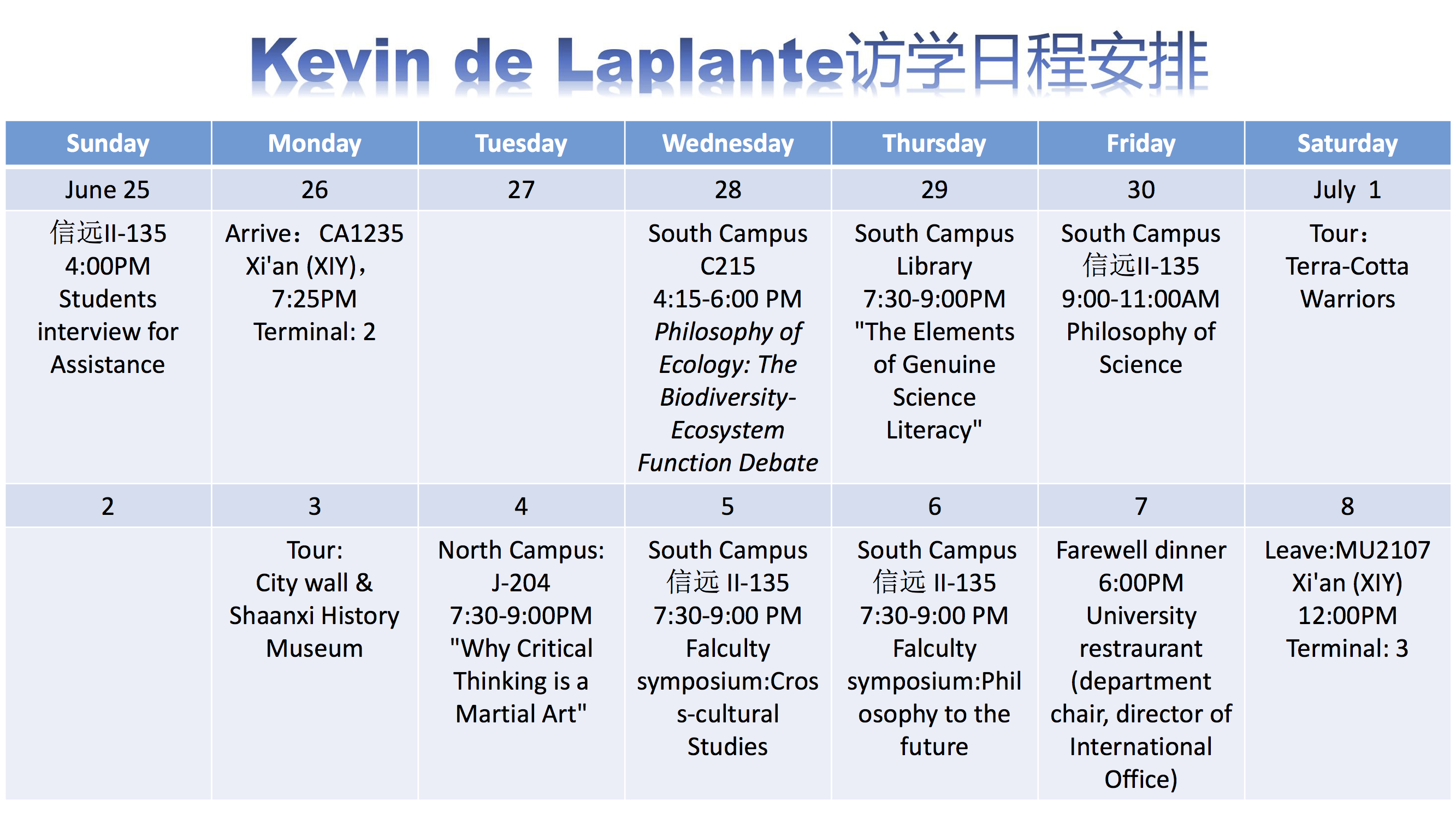
Philosophy of Ecology Workshop
My first scheduled event was a workshop with students in Dr. Zhu’s “Philosophy of Ecology” class.

The students had read one of my articles on philosophical issues in the debate over the relationship between biodiversity and ecosystem functioning. So we talked about that article for the first half of the class.


In the second half of the class the questions were more wide-ranging: the US pullout of the Paris Accord; ethics and vegetarianism; teleology and the cosmos.




Great questions and a great discussion!
Public Talk on Science Literacy
The advertised title was “The Elements of Genuine Science Literacy”. I’ve spoken quite a bit about this topic. You can find several videos on the subject in the Critical Thinker Academy.
Basically I make the case that insofar as science literacy entails that one can think critically about the nature of science and its role in modern life, most people, and indeed, most people with advanced science degrees, remain scientifically illiterate. However, the elements of genuine science literacy could be taught to high school students, if there was a will to do it. I outlined what a curriculum dedicated to science literacy would look like.
Again, Dr. Zhu did translation for me when appropriate.


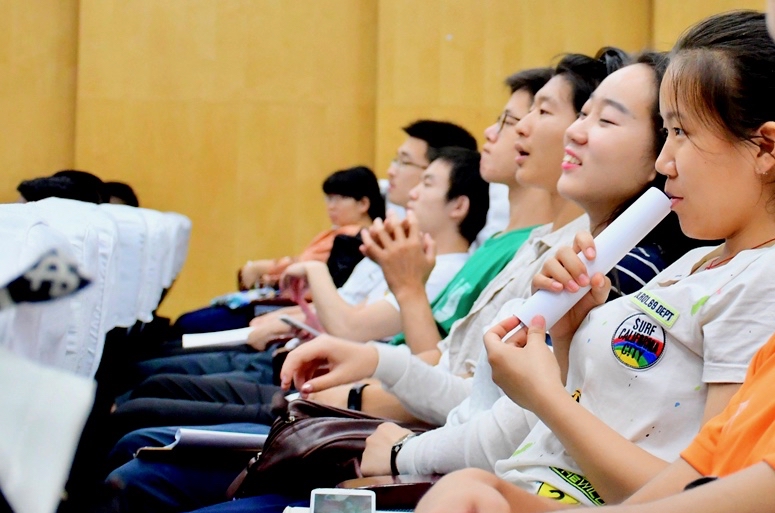
Great questions again, but we had less time for follow-up.
I love that the student in the foreground has a shirt that says “Surf California City”. These students are much more comfortable with western lifestyle and values than even the generation only ten years older.
Philosophy of Science Workshop
This was Friday morning. A workshop with a small group of students studying Philosophy of Science.
You can’t drink the tap water in most places in China, so everyone brings water. Especially in 37 degree heat.


There’s a lot of interest in the philosophy of science and technology in Chinese universities.
This is partly due to the legacy of Marxist and Maoist education, and the belief that Marx offered a truly scientific theory of economics and social change.
But in this session we mostly talked about ideas I had introduced in my talk the previous evening. One of the distinctions I make is between the “logic” of science and the “methods” of science. We spent some time clarifying the distinction and working through some examples.
Then the conversation veered into a discussion of whether artificial intelligence could ever evolve and be creative. Philosophy is awesome.
Great Food and Great Companions
I was very lucky to have guides and chaperones for my trip who could help navigate the language barrier, show me the sites of a 3000 year old city, and order great food!
Dr. Zhu was my daily guide for much of the time, but she was not alone.

Here are two undergraduate philosophy students who volunteered to spend time with me, lead me on tours of the city, and otherwise help me have the best experience possible. Thank you for all your assistance and company!
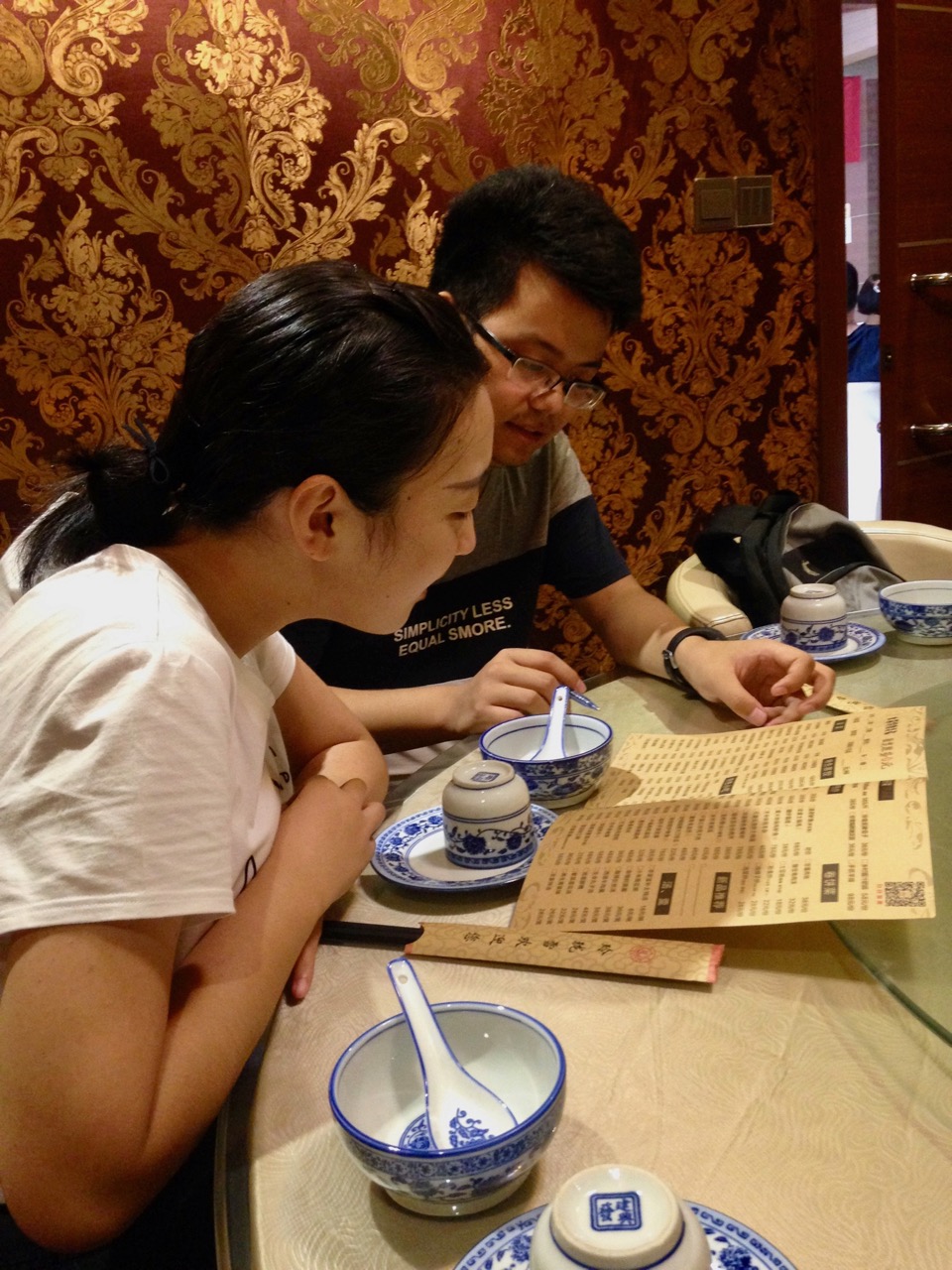
Li Hefeng and Xue Bao Kang spent a long, hot day with me on tours. We had a fantastic lunch.

We had four at the table, and believe it or not, we ate almost everything.
Seeing the Sights
We visited the “Huaqing Pool” on Saturday.
The pool is a complex of hot springs located at the northern foot of Mount Li, one of the three major peaks of the Qin Mountains. It’s part of the Huaqing Palace, built in 723 by Emperor Xuanzong of the Tang dynasty. The palace was built around the hot springs, taking advantage of the geothermal heating. It’s about 25 km east of Xi’an.
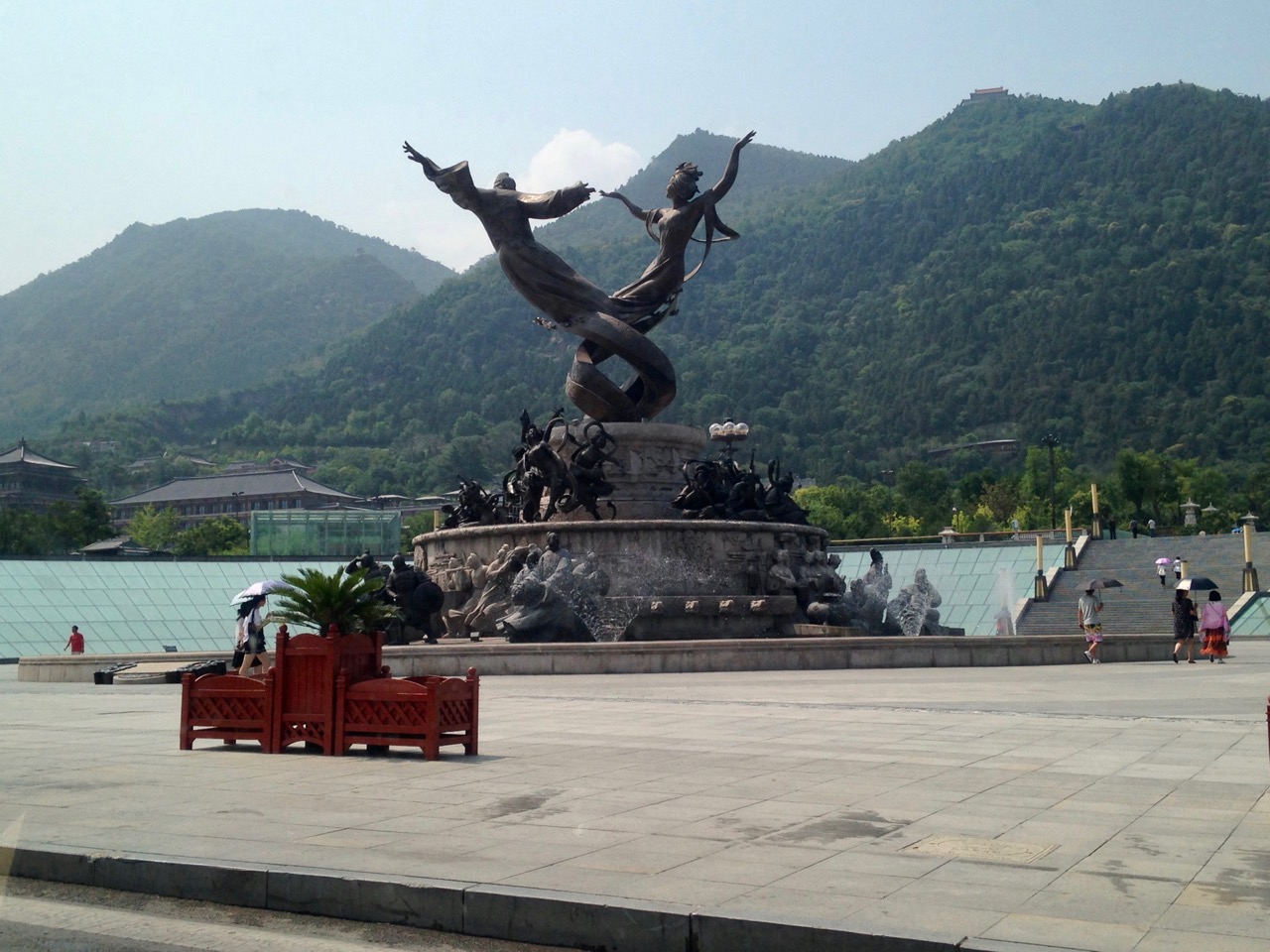
It is also the setting that tells the story of the Emperor’s romance with his consort Yang Guifei. This is a gorgeous statue of the Emperor and Lady Yang, with the mountains in the backdrop.
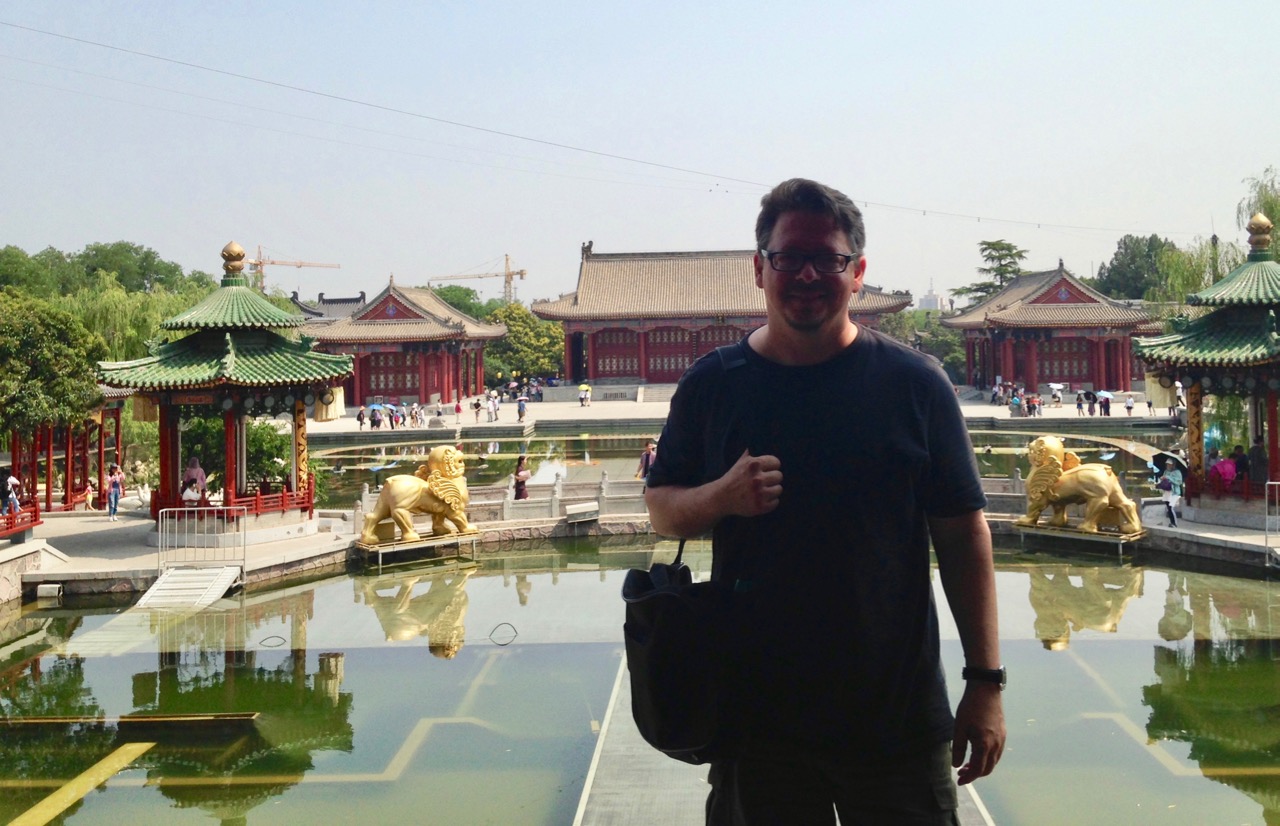
Proof that I was there …
You can’t visit Xi’an without seeing the famous Terracotta Army.

This is a collection of life-sized terracotta clay sculptures depicting the armies of Qin Shi Huang, the first Emperor of China. It’s a form of funerary art, buried with the emperor in 210–209 BC. The purpose was to protect the emperor in his afterlife.
The figures were discovered in 1974 by local farmers in Lintong District, Xi’an. They vary in height according to their roles, with the tallest being the generals. The figures include warriors, chariots and horses.
Estimates from 2007 were that the three pits containing the Terracotta Army held more than 8,000 soldiers, 130 chariots with 520 horses and 150 cavalry horses, the majority of which remained buried in the pits nearby Qin Shi Huang’s mausoleum.
Other terracotta non-military figures were found in other pits, including officials, acrobats, strongmen and musicians.

The sculptures are all unique, and originally were painted with bright colors. This is what some of they would have looked like.
Upon ascending the throne at the age of 13 years old in 246 BC, Qin Shi Huang ordered the construction of this project.
The whole process took around 38 years, and employed the resources of over 700,000 labourers. Many of the labourers were killed and buried after their work, to preserve the emperor’s “secrets”.
Feeling Like Po
When you have this for lunch …

… it’s hard not to think of Po from Kung Fu Panda.


Second Public Talk
My second public talk was titled “Why Critical Thinking is a Martial Art”. It was a larger crowd, mostly graduate students.
Unfortunately I have no pictures from the event. But here’s the title slide.
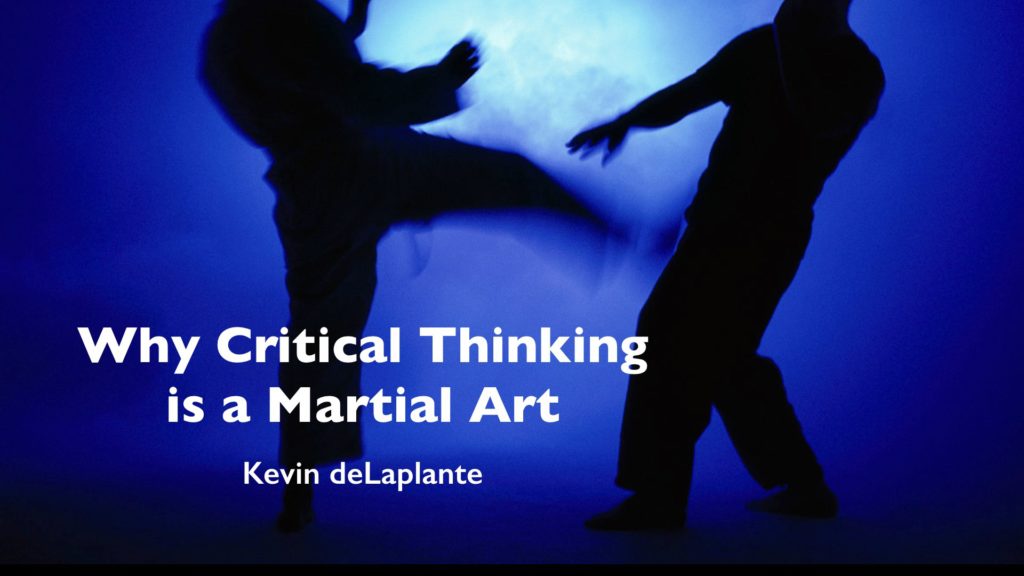
The term “critical thinking” is a modern American invention, but the concept has a long history in western philosophical, scientific and political traditions.
In this talk I gave a brief overview of this history, and identified several problems with how critical thinking skills are conceptualized and taught in the North American education system.
I argued that our growing understanding of the nature of human reasoning and the psychology of belief and decision-making demands a fundamentally new approach to critical thinking education.
And I frame this new approach using concepts borrowed from the philosophy and practice of martial arts.
None of this will be new to anyone who follows my podcast.
In the Q&A we talked about whether any public education system actually teaches critical thinking; whether it is reasonable to expect that any more than a small percentage of the population – a cultural elite – will ever develop these skills; and whether it’s possible to have a “pure” approach to argumentation that is not affected by rhetoric and the psychology of persuasion.
Physical Culture in Public Spaces
Just down the road from my hotel was a university sports field with a large track around it. Every morning, between 6 AM and 8:30 AM, people come out to this public area to do fitness activities. Jogging. Tai Chi. Calisthenics. Hundreds of people. Of all ages.
This is part of public community culture in China. People use these public spaces for all kinds of activities. It was really something to see. I came out here often just to people-watch.

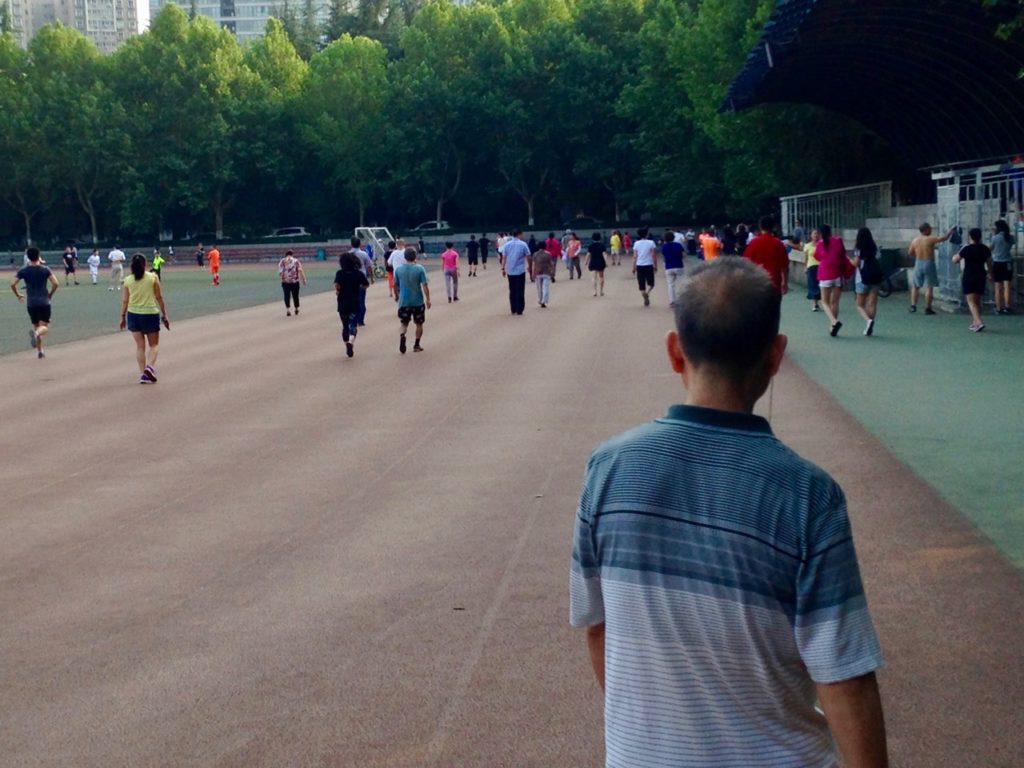
Video of a group doing tai chi:
On Saturday they added a bunch of organized sporting activities. Soccer on the field. Tai chi. Ping pong. Basketball. Again, all ages, not just young people.

Last Supper
On the last Friday of the visit we had a final dinner with my host, several members of the Philosophy department, and some people from Human Resources and International Programs at Xidian University.


The great joy of eating in China, as a foreigner: you never know what you’re eating until you put it in your mouth, and even then you might be wrong … but you can count on it being delicious.


Scott J
20 Aug 2017Wow, I thoroughly enjoyed your travel experiences!
It was very inspirational to hear about the brave student publicly speaking about the lack of critical thinking curriculum in China. After Tiananmen Square, I gave up on the authoritarian government in China.
But I don’t know for sure; I could just be hallucinating in a Mass Hysteria Bubble right now (Scott Adams’ blog of August 17)!
Kevin
2 Sep 2017This younger generation in China is going to shake things up. I was inspired by that student too.